Best Kanban Board Software in 2025
Choose the best Kanban software to easily keep track of all your projects.
Looking for Kanban board software? You've come to the right place.
There are hundreds of different project management tools out there, with new options emerging each year. These tools continue to evolve and become increasingly complex and powerful, allowing users to create dynamic timelines, databases, Gantt charts, calendars, dashboards, and much more.
Hoever, a simple Kanban board remains one of the most popular and effective ways to keep projects on track. What sets Kanban board software apart is its ability to simplify the complexity of project management. In this article, we'll explore some of the most popular Kanban board software solutions and examine their strengths and weaknesses.
What is Kanban board software?
Kanban board software is a digital tool that helps individuals and teams manage tasks and projects using the Kanban method. This method typically involves splitting a work process into stages and visualizing it using three basic elements:
The board represents the workspace for your process or project.
Lists represent the categories or stages of your workflow.
Cards represent individual tasks that move across the board till they're complete.
Kanban board software essentially digitizes the traditional physical Kanban board. It allows you to create a virtual board with columns that represent different stages of work, such as "To Do," "In Progress," and "Done." Tasks are represented by cards that move from one column to the next as they progress.
This gives you a clear overview of the tasks' status and helps in identifying bottlenecks or areas of improvement. Some Kanban board software also allows adding details to these cards, like descriptions, due dates, and assignees.

Benefits of Kanban board software
Kanban board software offers several practical advantages for managing tasks and projects in various contexts. Here are the key benefits of using a kanban board tool in your workflow:
Visual clarity: The visual nature of Kanban board software makes it easy to grasp the status of tasks at a glance. This reduces confusion and fosters a shared understanding of ongoing work.
Optimized workload: By limiting work in progress (WIP), Kanban software minimizes bottlenecks.
Easier prioritization: With tasks categorized on the board, teams can prioritize work effectively and focus on high-priority items.
Continuous improvement: Regularly analyzing the Kanban board helps teams identify process inefficiencies and implement continuous improvements.
How to choose Kanban board software?
When choosing Kanban board software, it's important to ensure the tool aligns with your team's needs. After tools like Trello popularized the Kanban approach to managing projects, most project management tools added Kanban boards to their feature sets, but that doesn't mean that every tool will be a good fit for your workflow.
Here are some of the key considerations you have to keep in mind when making a decision:
Ease of Use: Unless your team is made up of people with a technical background, opt for a Kanban tool that's user-friendly and accessible across different users and team types. There are a lot of pretty sophisticated Kanban software solutions out there, but their interfaces can be cluttered and intimidating.
Integrations: Ensure the Kanban software can integrate with the other tools you use.
Performance: Opt for a Kanban app that offers quick response times when navigating through boards, adding tasks, and making updates.
Scalability: Consider your team's growth and long-term needs. Choose a tool that can accommodate your team size and potential future expansions.
Best Kanban board software solutions
There are dozens of Kanban software solutions you can choose from. Some of them are fairly basic, while others are packed with complex features and customization options. There is no one-size-fits-all solution, and depending on your team's unique workflow and requirements, different Kanban software may be a better fit.
To make your decision easier, we've put together a list of the 10 best Kanban software solutions, based on real reviews.
- Nuclino
- Trello
- Jira
- Asana
- Businessmap (formerly Kanbanize)
- Kanbanchi
- MeisterTask
- Microsoft Planner
- KanbanFlow
- Wekan
Check out the list below and find the Kanban software that best suits your team's needs.
1. Nuclino
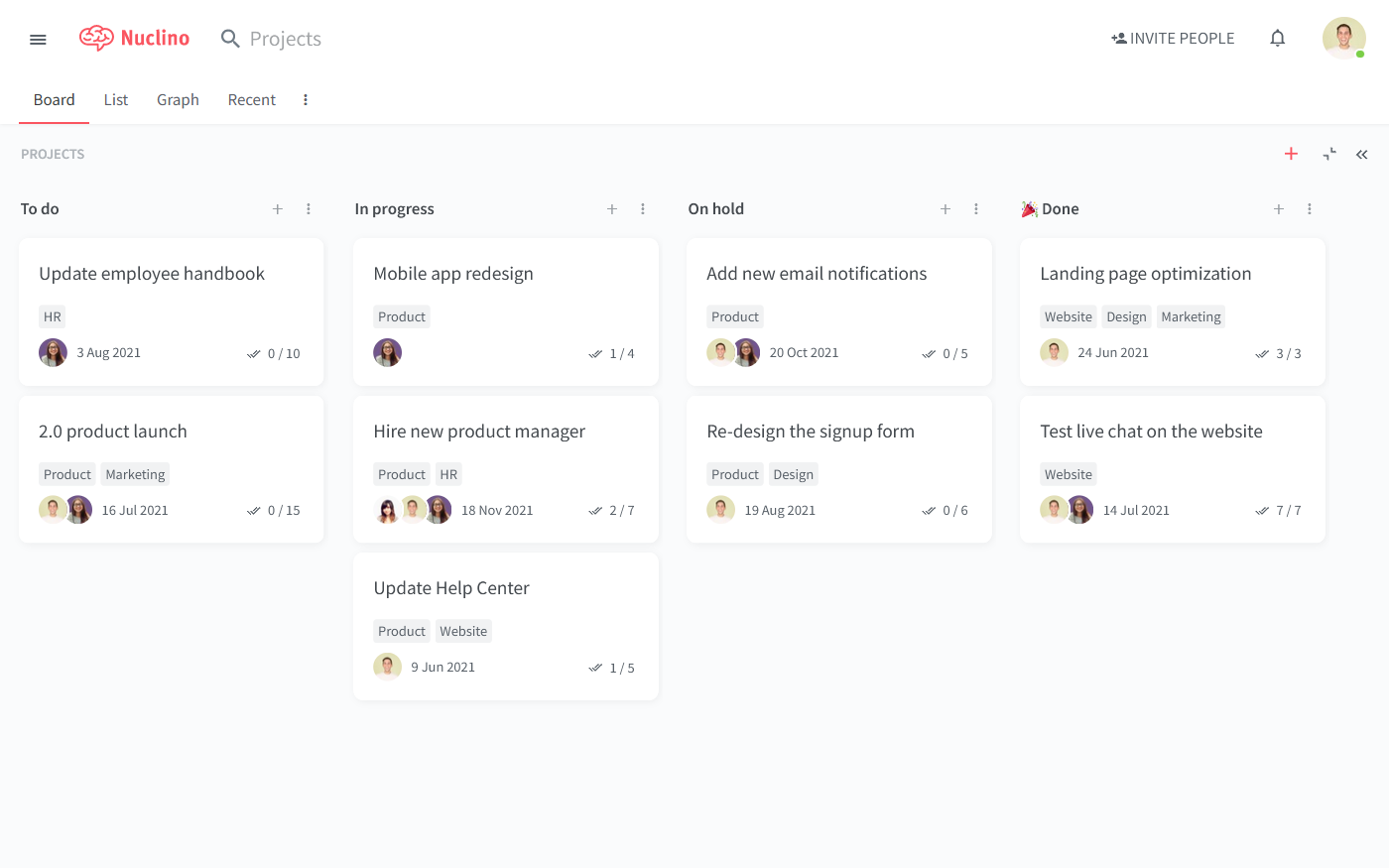
Pricing: Free, advanced features starting from $6/user/month
Rating on Capterra: 4.7/5
Nuclino is a unified workspace where teams can bring all their knowledge, docs, and projects together. It offers multiple ways to arrange tasks, including a lightweight Kanban board. The interface is clean and straightforward, with all the essentials needed to get things done.
Similar to other Kanban software, Nuclino allows you to move cards across the board to reflect progress. You can enhance each card with additional details such as due dates and labels You can use these details to filter and focus on specific things, like tasks that need urgent attention.

Each card on the Kanban board is its own document where your team can work together in real-time. You can add notes, task lists with due dates and reminders, files, tables, videos, and more, all in one place.
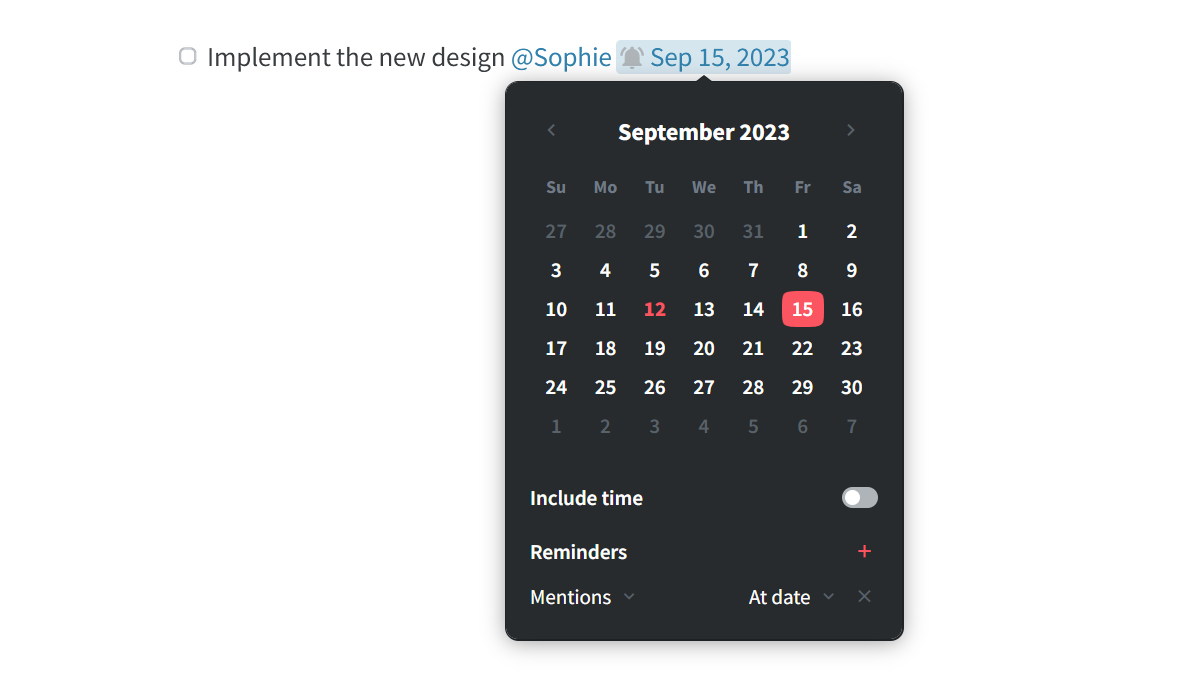
You can also leave comments and exchange asynchronous feedback, preserving the context of every decision.
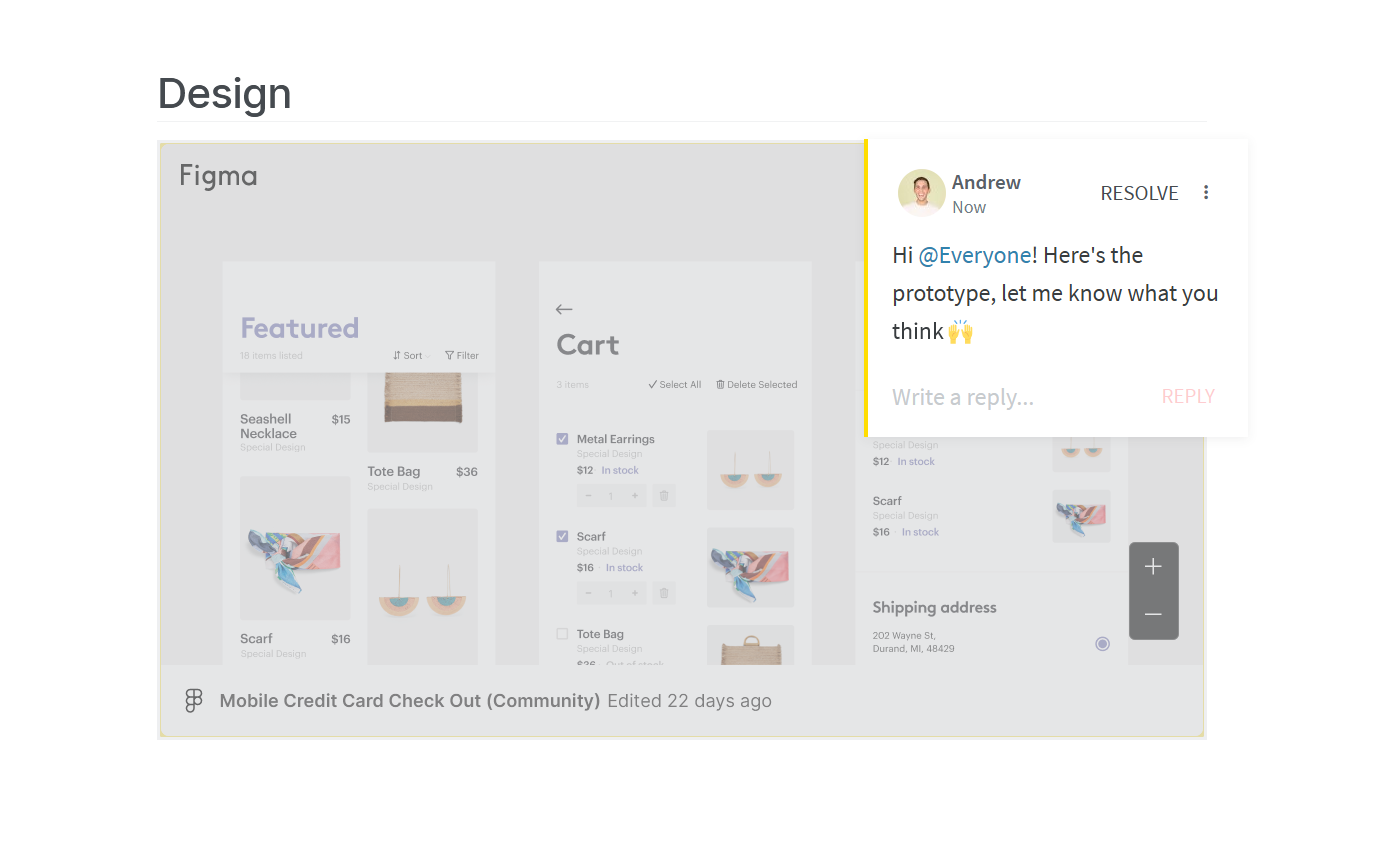
While you can use Nuclino exclusively as Kanban board software, its board view is one of many visualization options you can choose from. This flexibility makes Nuclino a great tool for a wide range of different use cases. You can use it to take notes, create internal documentation, build your internal knowledge base or team wiki, and more. It works like a collective brain, allowing you to bring all your team's work together in one place and collaborate without the chaos of files and folders, context switching, or silos.
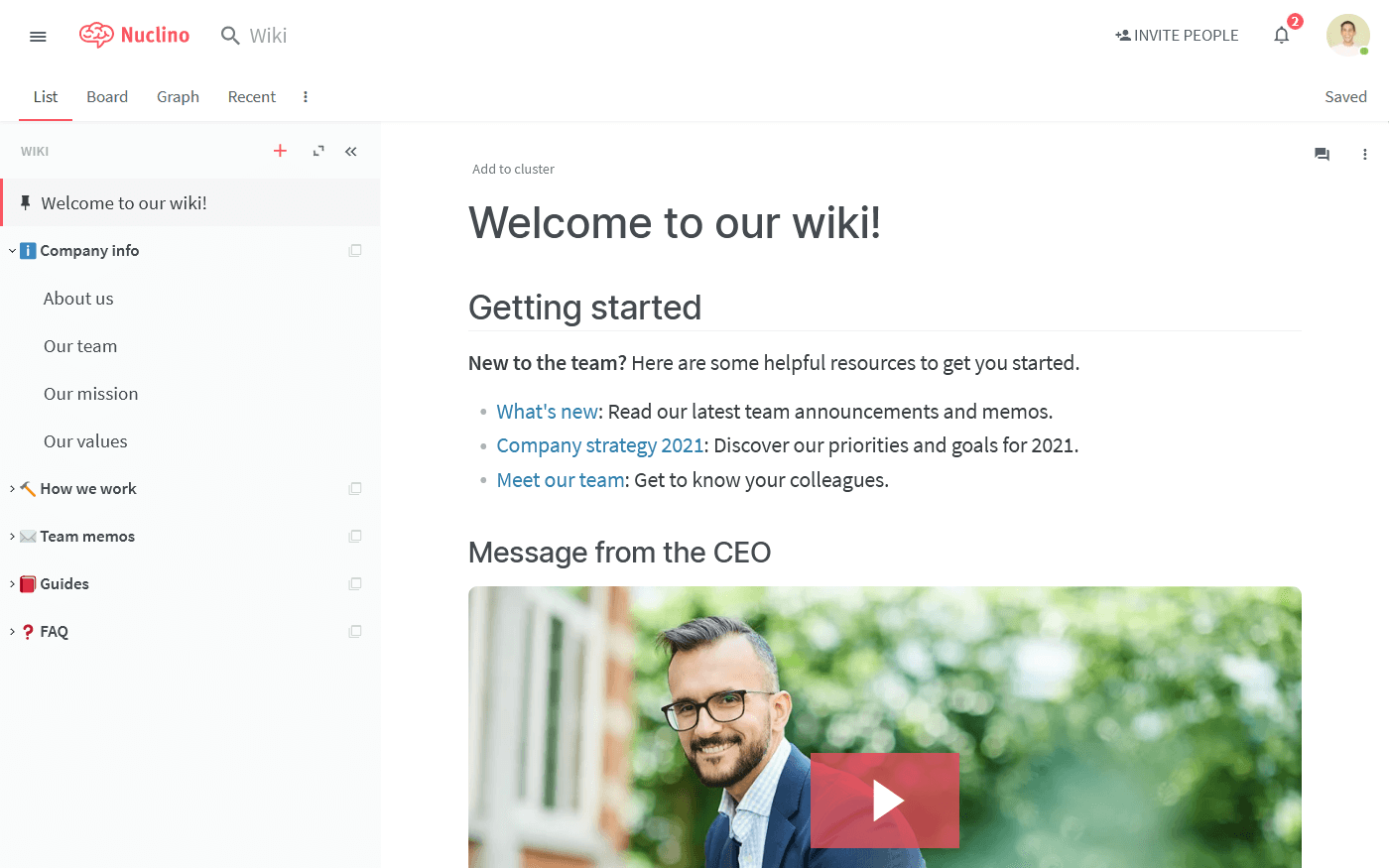
What users say about Nuclino:
"The way Nuclino is built makes the platform very flexible towards the way you work. I use Nuclino to document the projects I work on. It serves as a wiki for the project which helps anyone joining the project at later stages understand what was done during the design process, and why certain decisions were made."
2. Trello
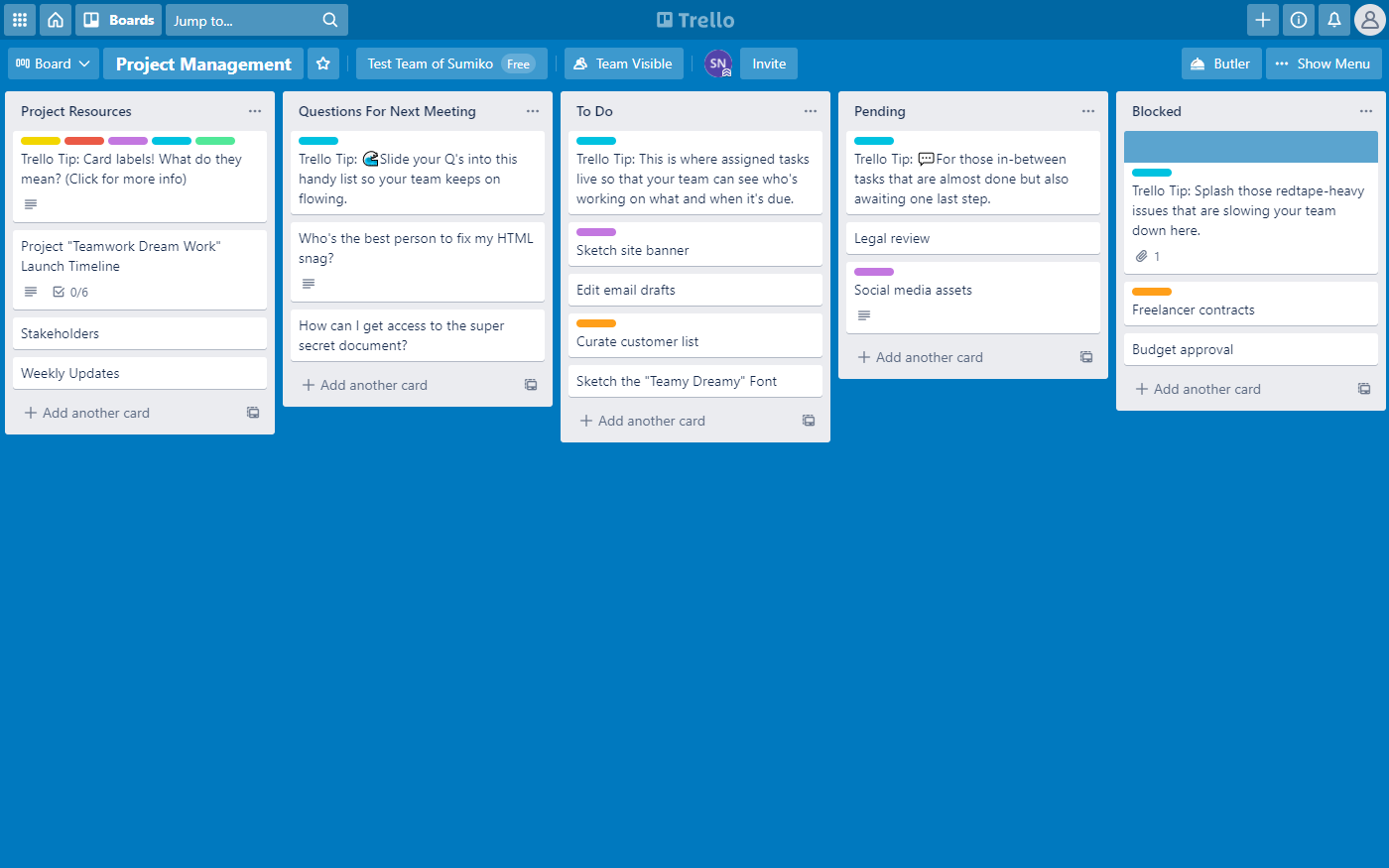
Pricing: Free, advanced features starting from $5/user/month
Rating on Capterra: 4.5/5
Trello stands as one of the original and most popular Kanban software solutions. It played a significant role in bringing the Kanban methodology into the mainstream several years ago. Designed with a blend of simplicity and adaptability, this application is well-suited for small teams, freelancers, and individuals pursuing personal projects. Its widespread appeal stems from its intuitive interface and streamlined setup, allowing newcomers to dive in within minutes.
Despite its straightforward design, Trello offers significant customization and expansion possibilities. Each card can encompass checklists, descriptions, comments, attachments, personalized color-coded tags, and more. A diverse range of Trello's Power-Ups empowers you to tailor your board's configuration to match your needs, whether they are straightforward or intricate.
Looking for more tools similar to Trello? Check out this list of best alternatives to Trello.
What users say about Trello:
"Trello is very simple to set up and use. I had our first Kanban board up and running in a few minutes! We used it for almost a year afterwards and it was still easy to manage and maintain. Project tracking with Trello is easy and time-saving!"
3. Jira
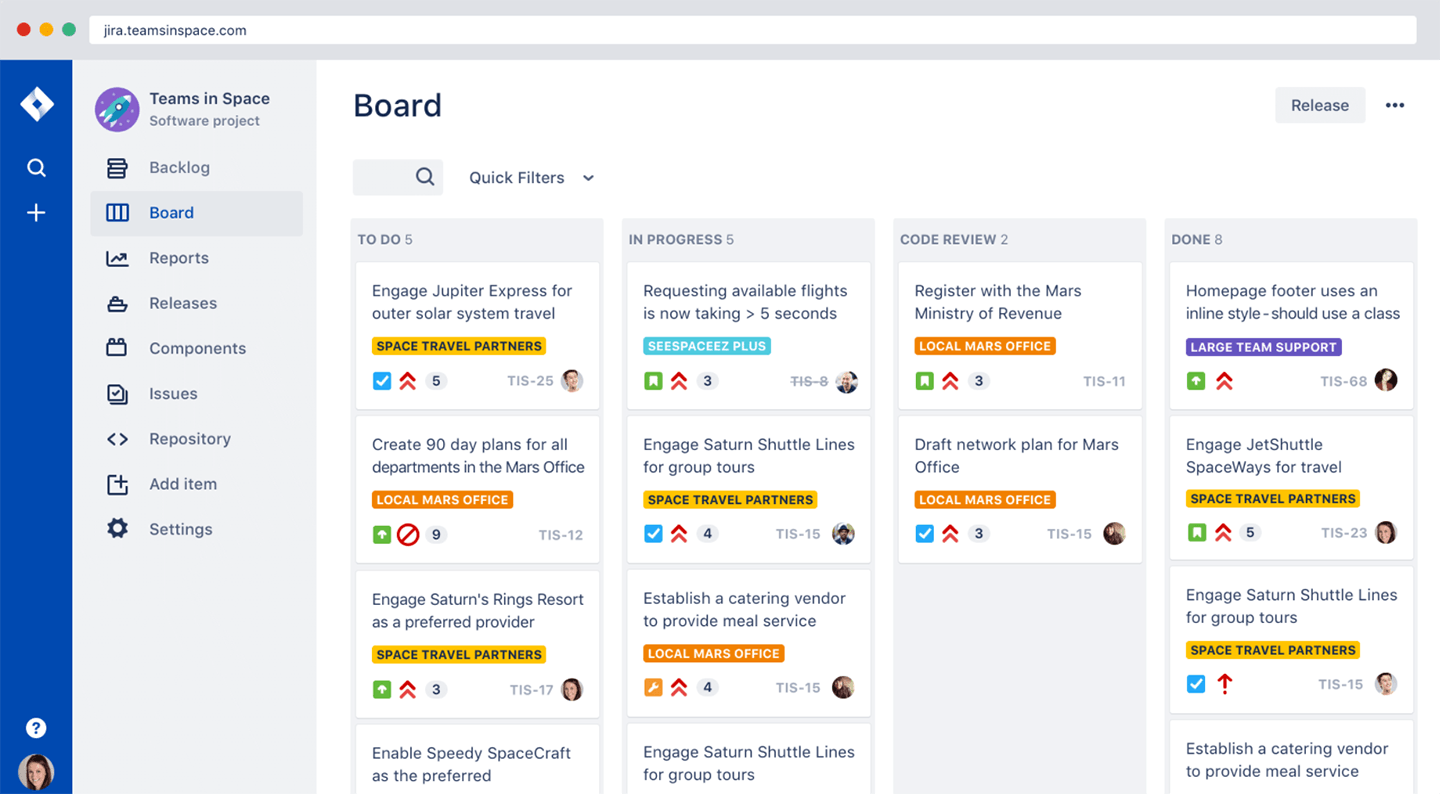
Pricing: Free, advanced features starting from $7.75/user/month
Rating on Capterra: 4.5/5
Jira, also owned by Atlassian like Trello, offers a notably different Kanban experience. Unlike Trello's simplicity, Jira is robust and intricate. It stands as one of the most powerful and customizable Kanban software tools.
Tailored for large, seasoned software development teams, Jira boasts an array of advanced features. These include specialized functions like scrum tracking, Agile reports, burndown and velocity charts, and more. Jira tightly integrates with other Atlassian tools such as Confluence and BitBucket.
Navigating Jira can be a challenge due to its learning curve, and non-technical users might find it less intuitive. Yet, for those seeking an exceptionally advanced Kanban solution and ready to invest time in mastering it, Jira presents a compelling choice.
Looking for more tools similar to Jira? Check out this list of Jira alternatives.
What users say about Jira:
"I have used Jira in a few projects and every time it proved to be a reliable and productive solution. Mostly we use Jira to keep track of our developer's time in the Kanban board. It is a great tool that allows the developers to actually show us how hard they work and what tasks they tackled. It is hard to set up the first time. You need to know which functions you need and which you should remove. But once you set it up and know how it works, it is a treat to work with it."
4. Asana
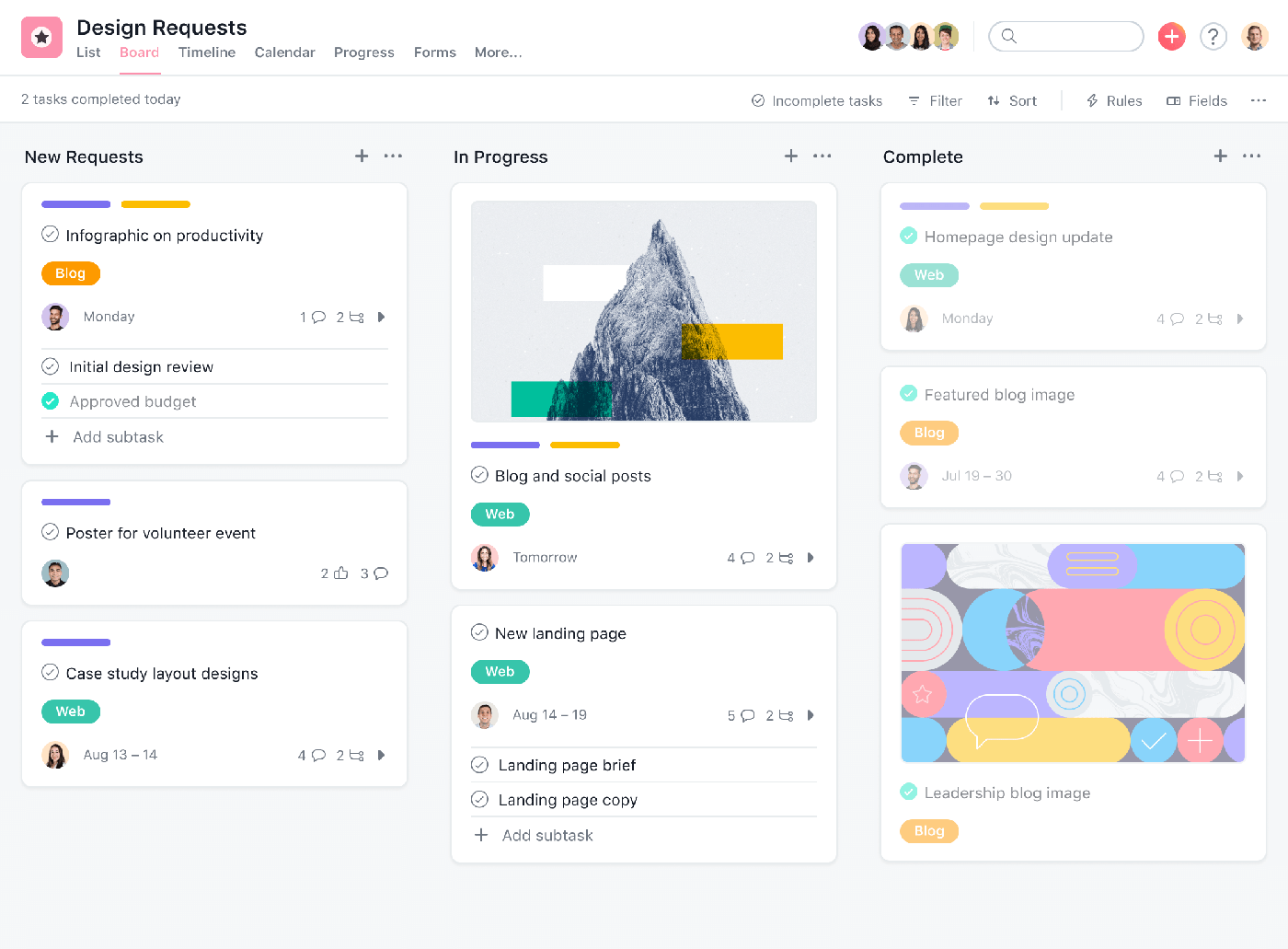
Pricing: Free, advanced features starting from $10.99/user/month
Rating on Capterra: 4.5/5
Asana began as a simple to-do list and gradually evolved into a comprehensive Kanban software solution. It includes all the essential Kanban elements like boards, cards, filters, and checklists. Beyond these core features, it offers diverse visualization choices, including lists, timelines, calendars, and Gantt charts. The platform enables the automation of recurring tasks, enhancing efficiency and minimizing mistakes.
As a whole, Asana combines an extensive array of functionalities with a contemporary, refined, and user-friendly interface.
Looking for more tools similar to Asana? Check out this list of Asana alternatives.
What users say about Asana:
"Asana is my favorite project and task management software. I love that I can switch between Lists or Kanban boards - depending on the project I like to use one over the other. Setting recurring tasks is also super easy and a great feature. Overall, I love that Asana is super easy to use, but also has more advanced features when you need them."
5. Businessmap (formerly Kanbanize)
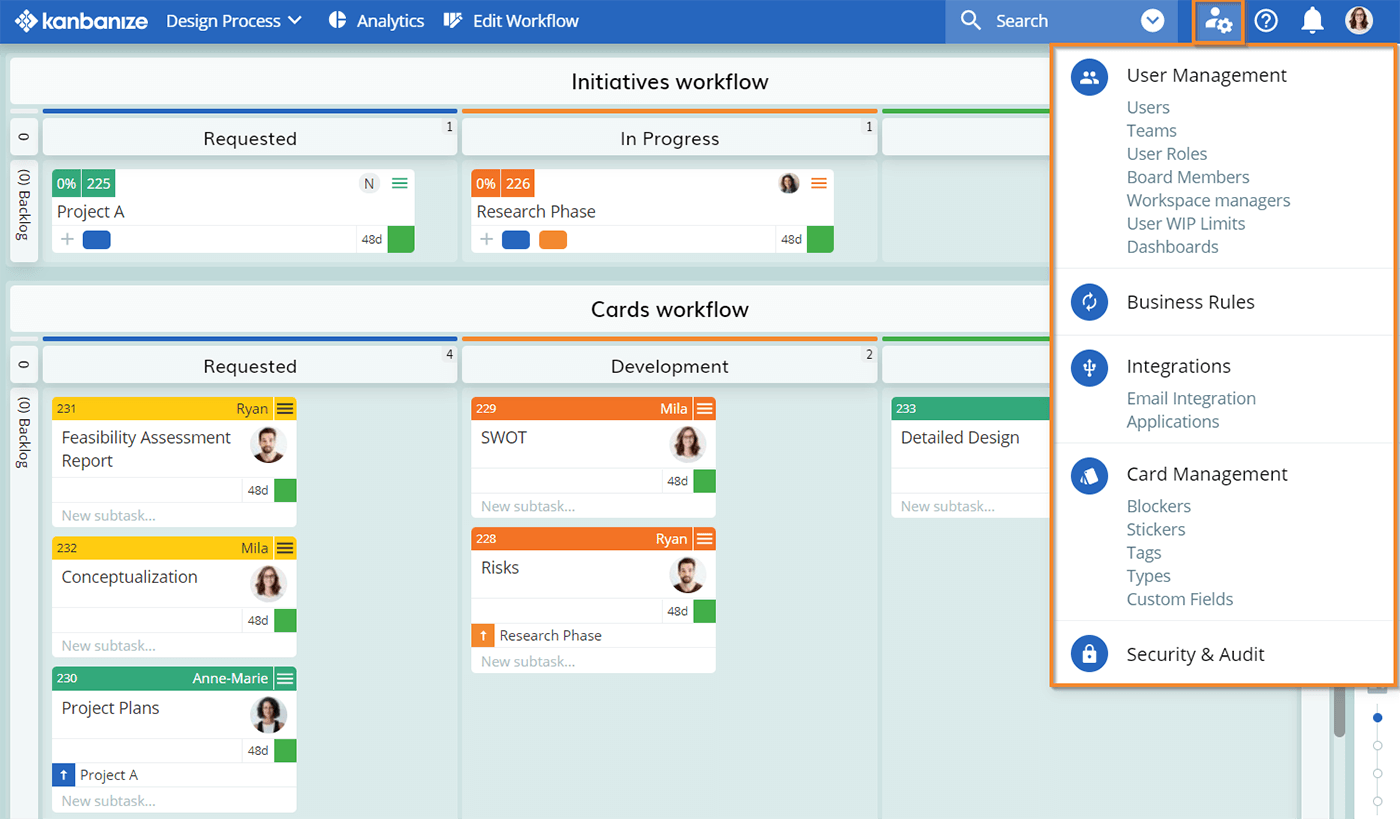
Pricing: Starting from $149/month
Rating on Capterra: 4.8/5
Kanbanize, with its roots dating back to 2009, is a robust Kanban software solution. Drawing from their experience in software development and process improvement, the founders Dimitar Karaivanov and Evgeni Toshev created Kanbanize to cater not only to software engineering teams but also to a wide range of industries and disciplines.
Kanbanize offers traditional Kanban elements like boards and cards, along with a range of advanced features, such as Gantt charts, swimlanes, and time tracking. It also allows teams to automate routine tasks, notifications, and workflow transitions.
What users say about Kanbanize:
"The ultimate Kanban board. I suggest Kanbanize sincerely to anyone who wants to implement a modern Kanban system, maybe it can be even better than physical boards."
6. Kanbanchi

Pricing: Starting from $3.97/user/month
Rating on Capterra: 4.5/5
Kanbanchi is a cloud-based Kanban software that is available as a standalone service or as an add-on for Google Workspace. It's a good option for users who want a tool that is specifically designed to work with Google Workspace.
Kanbanchi's user-friendly interface and simple setup make it particularly suitable for smaller teams and those new to Kanban methodologies. It's an apt choice for users seeking a straightforward solution that doesn't overwhelm with excessive features. However, for teams that require advanced project management functionalities or intricate automation, it might not be the most comprehensive option available.
What users say about Kanbanchi:
"One of the best kanban board software I've tried. It's easy to use and its templates make it easy to streamline processes. Checklists and due dates, along with priorities, make it easy to keep track of what needs to be done and when."
7. MeisterTask
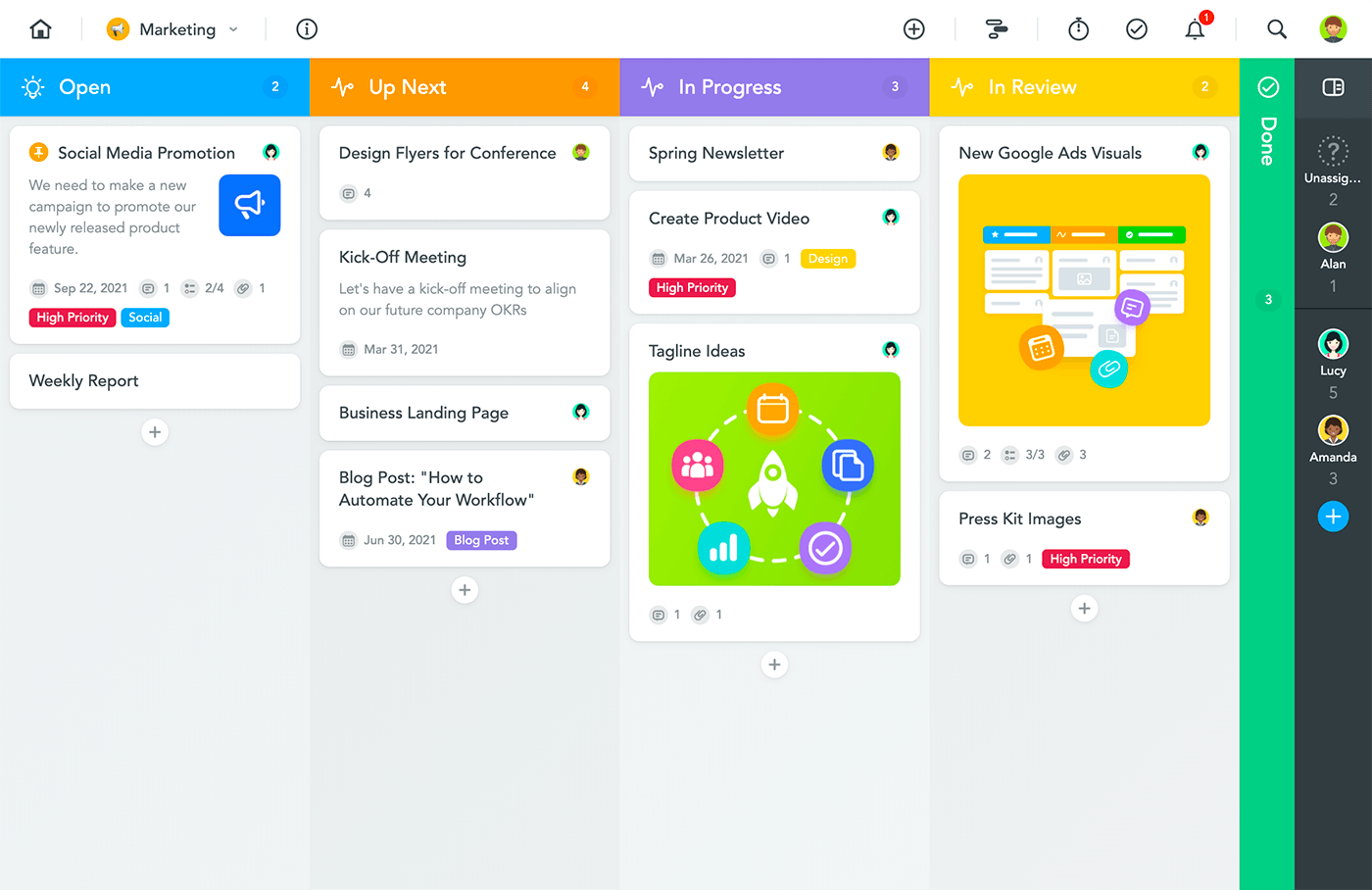
Pricing: Free, advanced features starting from $8.25/user/month
Rating on Capterra: 4.7/5
MeisterTask can be a good Kanban software for those who need a more visual and team-oriented task management tool. It features a user-friendly interface, intuitive drag-and-drop functionality, and integrations with many other tools. MeisterTask also offers real-time collaboration, Gantt charts, and custom workflows to help teams stay on track and keep tasks organized.
Compared to the simple approach of other Kanban solutions like Kanbanchi, MeisterTask is fairly flexible, which makes it suitable for a wide range of use cases, from simple personal task lists to complex project management for teams.
What users say about MeisterTask:
"I did not like how Todoist just looks like an overgrown to-do list. I wanted something that would be visually appealing and not overly distracting. I like MeisterTasks and will continue to use it and recommend it. I love the overall layout and design look of the software. I like that I can get a good picture of what my day looks like — what I've planned to do, and what I may be missing from my tasks that needs to be done."
8. Microsoft Planner
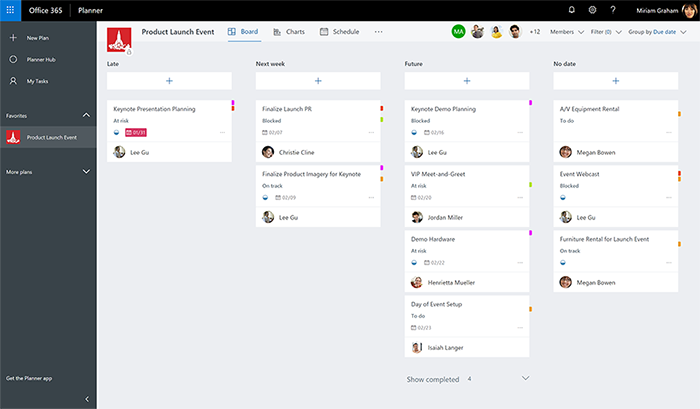
Pricing: Starting from $5/user/month
Rating on Capterra: 3.9/5
Microsoft Planner is a Kanban software solution created by Microsoft as a part of the Microsoft 365 suite. Planner is primarily aimed at small and medium-sized businesses.
Microsoft Planner has a Kanban board layout that is similar to Trello and should be familiar to users who have experience with that tool. In terms of features, Microsoft Planner has basic project management capabilities, but also has some extended functionality through its integration with other Microsoft 365 tools, such as Flow and Teams. However, it should be noted that Microsoft Planner has relatively few third-party integrations compared to Trello.
Looking for more tools similar to Microsoft Planner? Check out this list of best Microsoft Planner alternatives.
What users say about Microsoft Planner:
"I have really enjoyed using Planner for what it is — basic project and task management. Super simple to use and with a good range of functionality, Planner is a light project management tool that is an important part of the Office 365 suite."
9. KanbanFlow
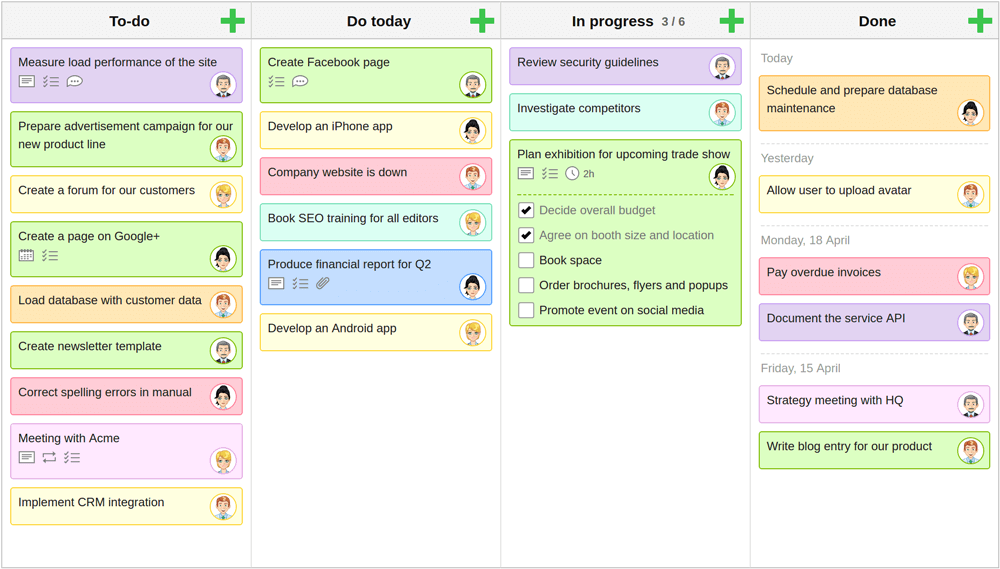
Pricing: Starting from $5/user/month
Rating on Capterra: 4.5/5
KanbanFlow is another software rooted in the Kanban methodology. It was developed by CodeKick AB, a Swedish software company, to provide a simple and effective way for teams to implement Kanban principles in their work processes.
This Kanban software has a built-in Pomodoro timer, which helps users manage their work time effectively by breaking it into focused intervals followed by short breaks. It also offers automation features such as recurring tasks, task templates, and triggers based on task actions.
What users say about KanbanFlow:
"Basic kanban tool. I wanted to experiment with kanban task boards, and this was a great initial platform. Compared to other kanban software, this one is really simple and easy to use. Get rid of the sticky notes on a whiteboard and use this instead! Very easy learn and start using."
10. Wekan
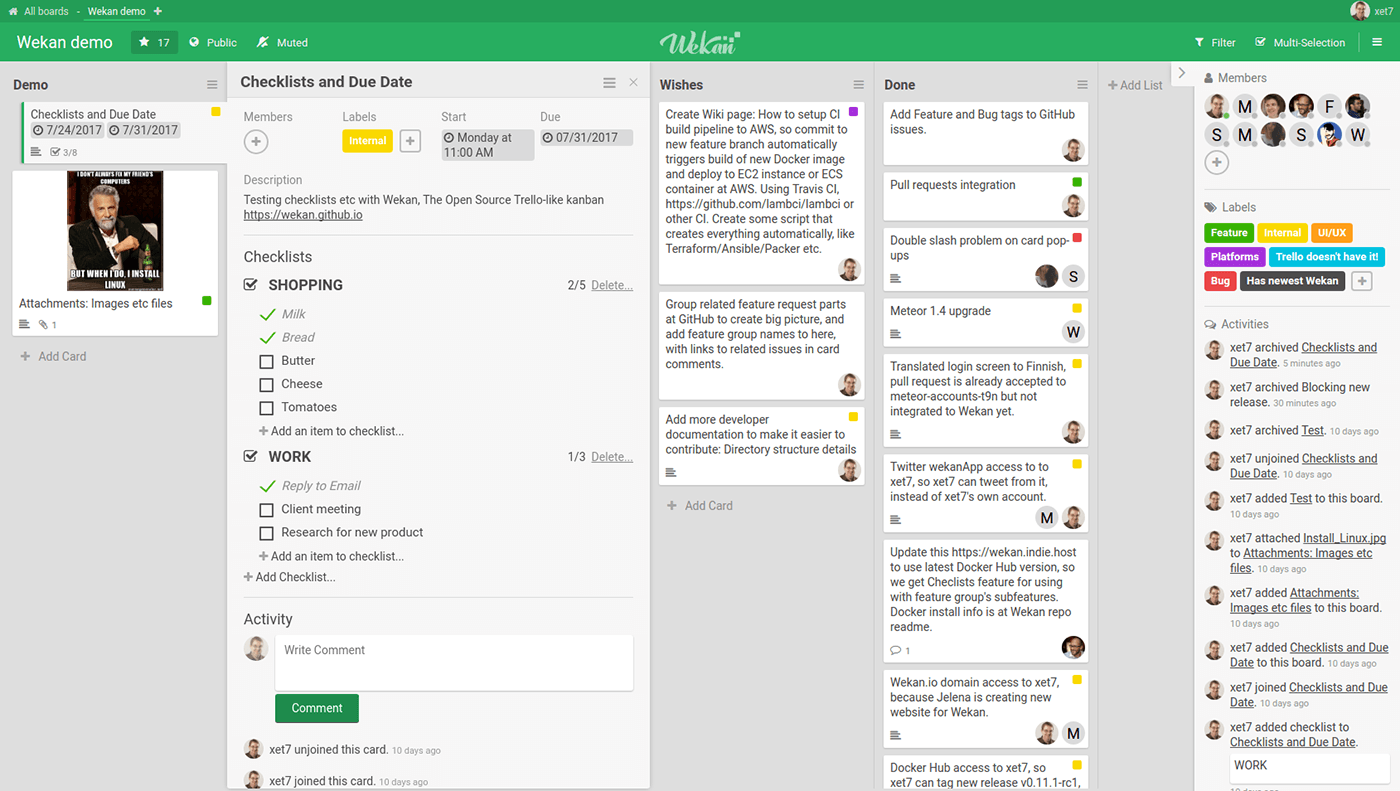
Pricing: Free
Rating on Capterra: No rating yet
If you value function over form, Wekan can be an excellent Kanban software for you. It may not look as slick and modern as some of the other Kanban platforms on this list, but it makes up for it in other areas.
Wekan is a completely free Kanban software. It's open-source and can be self-hosted. Its feature set includes Kanban boards, cards, swimlanes, checklists, and more. Every element can be freely customized to fit your team's workflow.
Note that, as with most self-hosted tools, you will need some technical skills to set up and maintain it on your own server. Wekan also doesn't have a mobile app, making it difficult to access it on the go.
What users say about Wekan:
"Wekan is a fully fleshed-out Kanban board system, similar to Trello. I like it more than Trello because it is free, open-source, and self-hosted (meaning my data stays my data). It also looks much better and more professional in my opinion, whereas Trello looks somewhat childish. If you're looking for an alternative to Trello, Wekan is great. If you don't have the technical skills to install it or don't have your own server to run it off of, it's probably not for you."
Find the best Kanban software for your team
Kanban boards are one of the most popular ways to organize and track projects, and have become a staple feature in nearly all project management tools. This list of Kanban software solutions is by no means exhaustive – besides the ones mentioned, other popular Kanban software includes Todoist, Kanban Tool, Airtable, Basecamp, and many many more.
You may need to try a few apps before you find the one that fits well into your team's workflow. We hope that this list made your decision a little easier.
Ready to get started?
